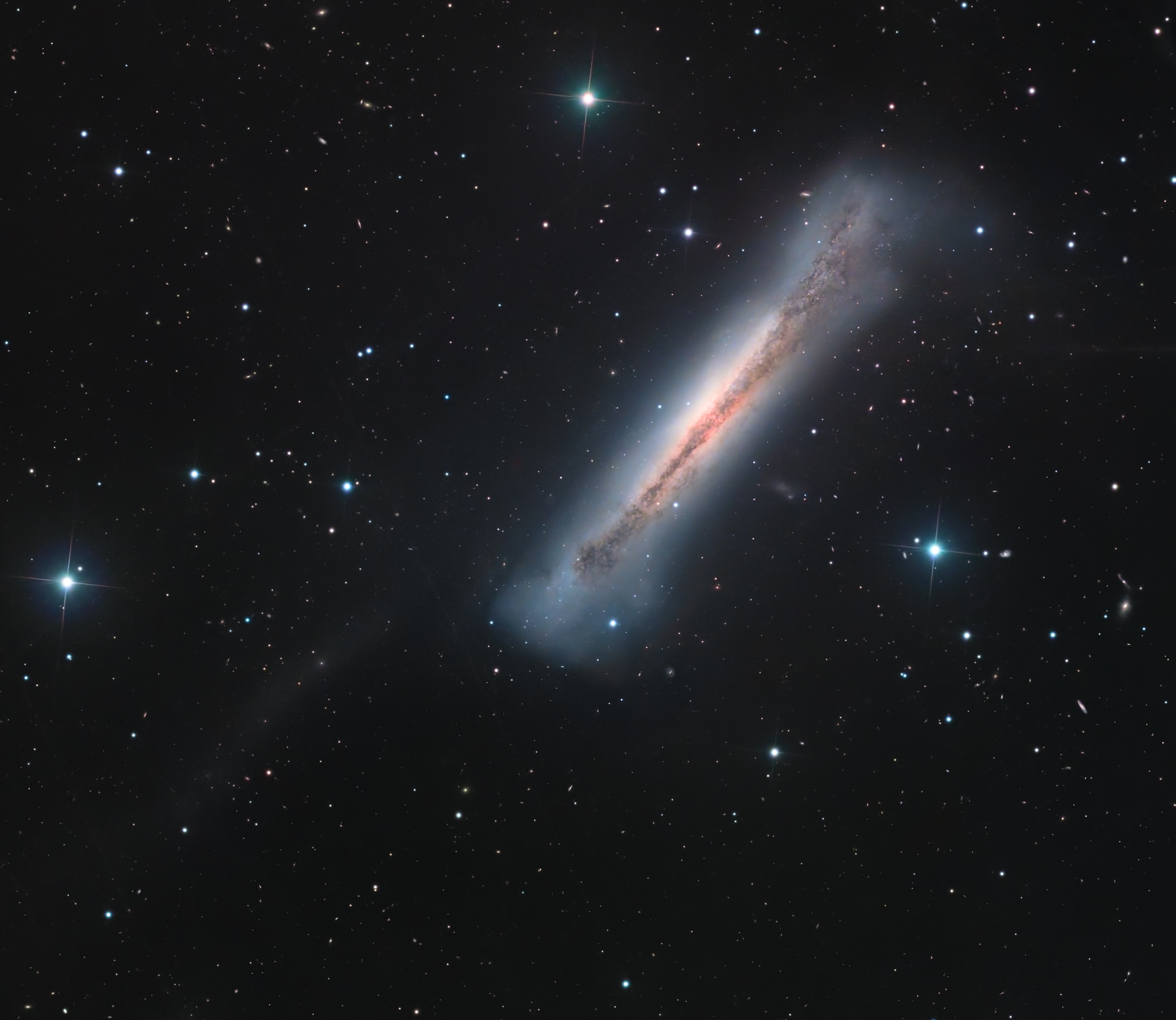
NGC 3628 is a large spiral galaxy, presenting to us edge-on, located near two other large galaxies; the tidal forces from the gravitational interactions among those three massive
galaxies has resulted in NGC 3628 being distorted. The three galaxies can be seen together in this photo I took years ago of the so-called
Leo Trio. NGC 3628 is estimated to be about 35 million light years away from us; at that distance, it is well over 100,000 light years in diameter (similar in size to our Milky Way, itself a large galaxy).
Two distinctive features of NGC 3628 (in addition to its odd shape) are the huge tidal tail (the faint stream of stars that tapers off toward the lower left of this image), and its satellite galaxy (the
faint smudge just below and to the right of the middle of the galaxy). The tidal tail likely is the telltale (see what I did there? I crack me up) of a collision (or very close encounter) between NGC 3628
and another galaxy in the past; it extends about 300,000 light years from NGC 3628 (most of it doesn't show up in my photo). Also, because we see this beautiful galaxy exactly edge-on, the dust lanes
are particularly prominent (the structure one sees in our Milky Way when viewed in very dark skies is the dust lanes in our galaxy. NGC 891
is a well-known, undistorted large spiral galaxy that we see edge on; contrast the shape of NGC 891 to that of NGC 3628 to see the effects of the tidal interactions to which NGC 3628 has been subjected.
It is sometimes difficult to understand the nickname given to celestial objects; it's not hard to understand why this galaxy is called "Hamburger Galaxy."
As usual in a deep-sky image, there are a lot of small (meaning distant) galaxies in the uncropped versions of the image (look for the oblong and/or fuzzy "stars").
Copyright 2022 Mark de Regt